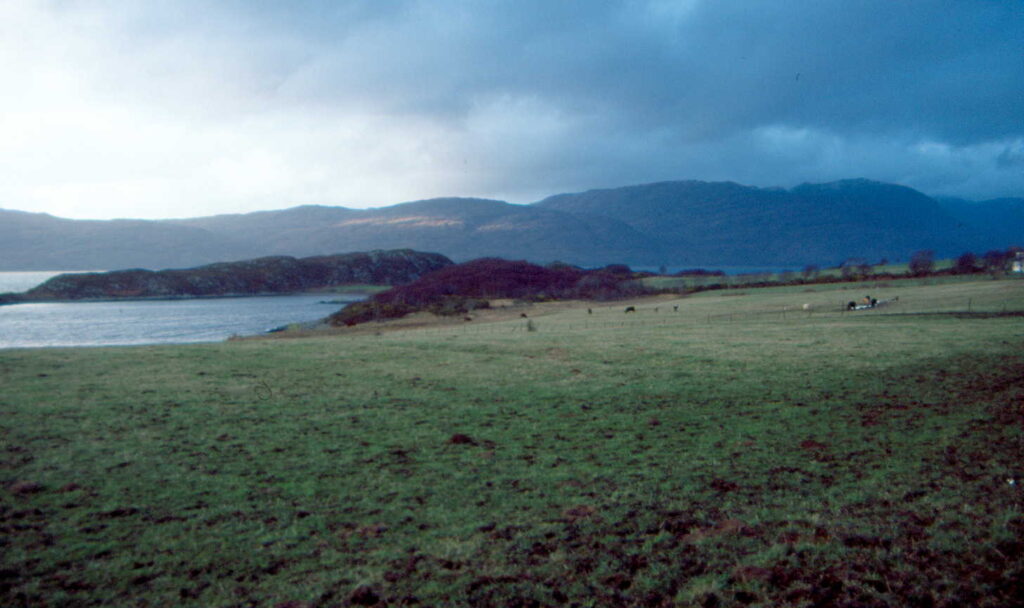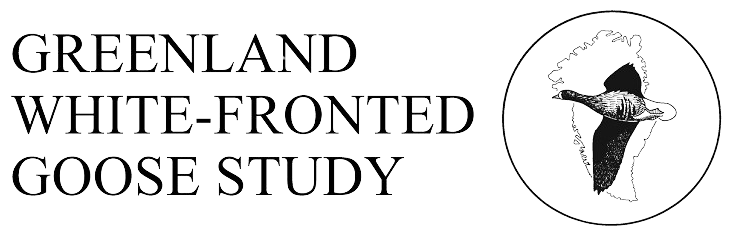
History
Not very much historical evidence is available about this little flock. It is not mentioned in Berry (1939), A-W (1963) or R&O (1979), and was first discovered by Brian Neath in 1990.
Status
(unknown to R&O). First located in 1990, this flock has fluctuated considerably but has never exceeded 20 individuals, presently teetering on the edge of survival, but determination of its true status hampered by use of alternative feeding sites which doubtless contributes to the large between year variation in number and the fact that the geese have simply not been found in several recent winters.
Maximum winter counts:
Breeding success: Age ratio data are not available for this flock.
Feeding sites and habitat: The feeding range of this flock is not clear and the regular disappearance in some years suggests that many sites used by these birds remain to be discovered. The core feeding site since its discovery has been Camas Dubh-aird (NG787332) where the geese frequent an area of rushy unimproved pasture. Brian Neath has seen them dropping down onto Kishorn Island in several winters at NG806376, so this is clearly one alternative feeding site not easy to see from the mainland. The flock has been seen at Drumbuie (NG774315) and Portaneorna (NG776319) where they have been seen feeding on a small area of stubble between ploughed strips amidst rough grazing. A single strangely marked bird was seen at Kirkton Bay (NG830270) in 2000/1, 2001/2 and 2002/3 and another at Balmacara (NG818272) in 2002/3, and up to 8 have also been seen using improved pasture at Duirnish (NG778312). Most of the time, a Dubh-aird, they feed on rough pasture with rushes and some improved pasture.
Roosting sites: Unknown
Habitat change: The area of rushy pasture favoured by the Whitefronts was fenced off in 2000/1 and 2001/2. Excavation for a new sewer for Plockton also took place in winter 2000/1,immediately adjacent to the favoured feeding ground, but this not seen to affect the Greylag Geese and Pink-footed Geese that were in the area at the time.
Aircraft disturbance: None known
Hunting disturbance: Not known, but see below.
Agricultural disturbance: There has been pressure on the National Trust for Scotland from local crofters to control the mounting numbers of Greylag Geese using the area also frequented by the White-fronted Geese. NTS are fully aware of the presence of the White-fronted Geese, so hopefully nothing untoward will occur on the favoured site, but more hunting pressure may be brought to bear at other sites in the vicinity
Site safeguards or disturbance refuge: The favoured feeding area is owned by NTS.
SNH Natural Heritage Zones/Area: Western Seaboard.
Threats: There is has been enclosure of formerly open rough pasture in the area and there is mounting pressure from increasing numbers of Greylag Geese which are causing some disquiet to local crofters.
Linkages with other sites: No marked individuals have been reported in this group.
